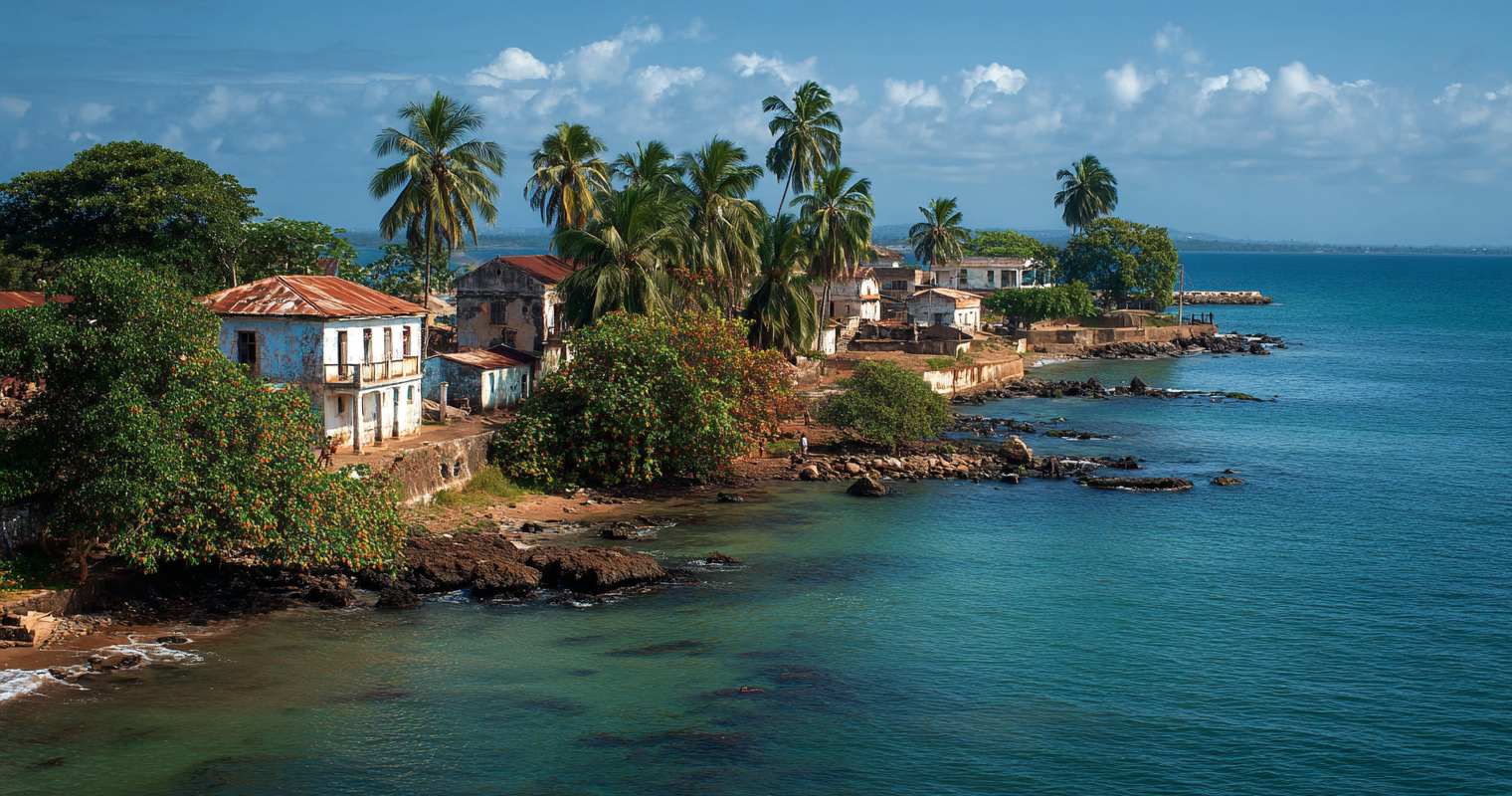
The São Toméan History Quiz invites you to explore a nation where history is preserved not in books alone, but in the daily rhythm of its islands. São Tomé and Príncipe are celebrated for their deep sense of community, where neighbors gather in markets and share meals while keeping traditions alive. Brightly colored fishing boats dot the coastline, a living reminder of skills handed down through generations. Music and dance fill village squares, blending history with celebration in every beat. Local artisans craft goods that reflect centuries of creativity and cultural exchange.
The São Toméan History Quiz also reveals how its people have turned cultural pride into a cornerstone of national unity. Storytelling is a vital part of social life, with elders passing down tales that teach values, wisdom, and historical context. Culinary traditions, rich with tropical ingredients, serve as another link to the past, where recipes remain rooted in heritage. Art and music reinforce a sense of identity, blending modern influence with ancestral memory. Education and community programs ensure that this legacy is celebrated rather than forgotten. Together, these traditions form a living history that gives São Tomé and Príncipe a cultural richness well beyond its size.
Families pass down crafts and skills that carry centuries of meaning. Markets function as cultural meeting points where history and commerce intertwine. Festivals bring entire communities together, blending performance and heritage into vibrant celebrations. In São Tomé and Príncipe, history is not an academic subject; it is a shared experience that shapes identity and strengthens belonging.
The Cultural Identity of São Tomé and Príncipe
The São Toméan History Quiz begins with the cultural foundations that define the islands. Traditional music and dance, often performed during local celebrations, express both joy and history. The national language carries influences from multiple eras, creating a unique linguistic legacy. Cuisine reflects an intimate connection to the land and sea, with tropical fruits and fresh fish at the heart of many dishes. Artisans bring this cultural tapestry to life through crafts that are as functional as they are symbolic.
Markets are central to this cultural narrative, serving as places where history meets daily life. Here, locals sell handcrafted items alongside regional produce, creating a living display of the islands’ heritage. These markets are more than economic hubs; they are cultural gathering spaces where tradition is passed down and celebrated.
The People Who Preserve São Tomé’s Legacy
The São Toméan History Quiz highlights the remarkable role of the islands’ people in protecting their history. Elders remain the storytellers and cultural educators, ensuring every generation understands the roots of their identity. Families maintain strong connections through shared customs, from preparing traditional meals to organizing local festivals. Craftsmen and women keep time-honored techniques alive, blending skill and history in their work. This collective effort strengthens the islands’ cultural continuity.
Modern education integrates this cultural heritage, teaching young people to value their past while embracing future opportunities. By combining tradition and progress, São Tomé and Príncipe nurture a society that honors history while confidently moving forward.
The Living Legacy of São Toméan History
The São Toméan History Quiz demonstrates that history on the islands is not frozen—it is evolving. Cultural festivals, music competitions, and artisan fairs ensure that the past remains a part of daily life. The historic architecture of the capital stands beside vibrant modern developments, reflecting a balance between preservation and growth. Language and storytelling keep ancestral voices alive, providing a direct link between generations. These elements together create a nation that lives its history every day.
In São Tomé and Príncipe, history is not just remembered—it is celebrated in every song, shared meal, and community gathering, ensuring the islands remain connected to their enduring roots.
9 Fun Facts About São Toméan History
- Traditional music blends African rhythms with island-born melodies unique to the region.
- The islands celebrate cultural festivals filled with vibrant parades and traditional dances.
- Many of the fishing techniques used today are centuries old and passed down through families.
- Handwoven baskets remain a common household item and cultural symbol.
- Storytelling nights are a beloved tradition in many villages.
- Local cuisine often includes tropical ingredients like bananas, coconuts, and papayas.
- The islands have one of the smallest yet most culturally distinct populations in the world.
- Colorful murals in the capital depict scenes from local folklore and history.
5 Serious Facts About São Toméan History
- Local crafts represent a vital link between historical identity and modern livelihood.
- São Tomé and Príncipe have a strong tradition of community-based governance.
- Cultural preservation is a central focus of the country’s education system.
- The islands’ music and oral traditions remain integral to understanding their history.
Sao Tomean History – FAQ
Sao Tomean history is highly significant as it sheds light on the colonial past of the island nation. It highlights the impact of Portuguese colonization on the culture, economy, and society of Sao Tome and Principe.
Sao Tome and Principe gained independence from Portugal on July 12, 1975, after years of struggle and resistance against colonial rule. The country’s independence marked a new chapter in its history, paving the way for self-governance and sovereignty.
Key events in Sao Tomean history include the arrival of Portuguese explorers in the 15th century, the establishment of sugar plantations and slave trade, the struggle for independence, and the transition to a democratic republic in the late 20th century.
Notable figures in Sao Tomean history include Rei Amador, a legendary freedom fighter who led the Batepa Massacre against Portuguese forces, and Manuel Pinto da Costa, the first president of the independent nation.
Sao Tomean history continues to influence the country today by shaping its cultural identity, political landscape, and socio-economic development. Understanding the historical context is crucial for comprehending contemporary issues and dynamics in Sao Tome and Principe.
